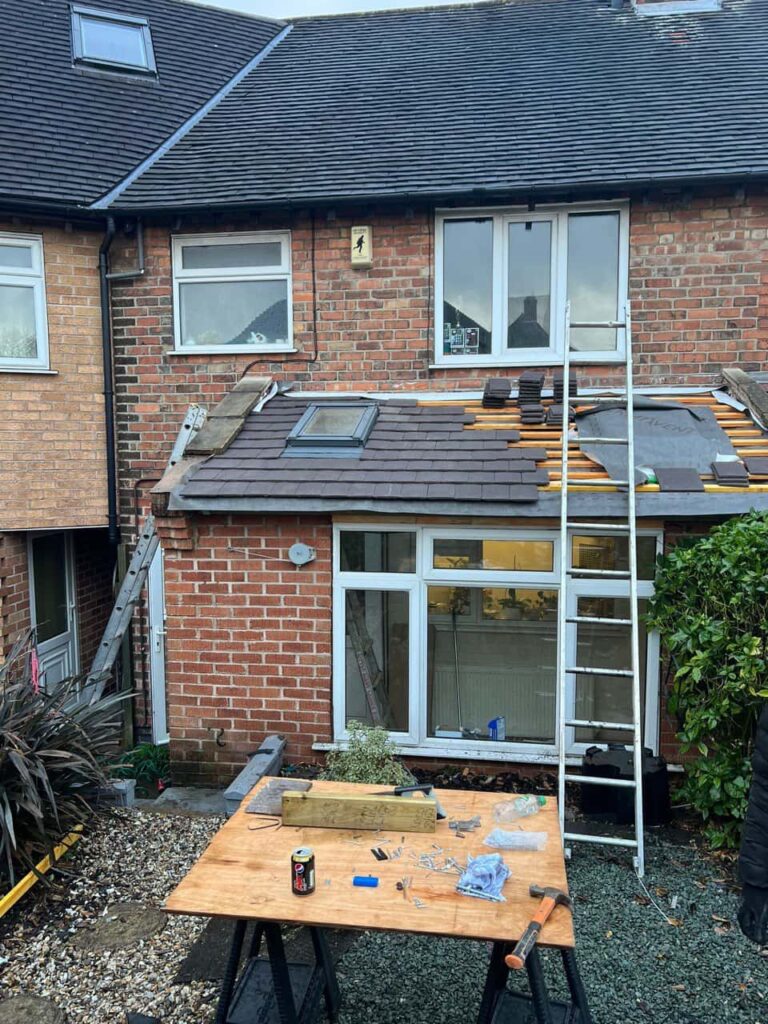Introduction: Extreme weather conditions pose significant challenges for roofing materials, especially in regions prone to heavy rain, snow, wind, and temperature fluctuations. Felt roofing, known for its durability and versatility, is popular for withstanding these harsh environments. This blog post will explore the performance and resilience of felt roofing in extreme weather conditions and why it’s a reliable option for Hassocks residents facing challenging weather patterns.
Weatherproof Properties:
- Felt roofing, typically made from bitumen or asphalt-saturated roofing felt, offers excellent weather proofing properties. Its composition provides a waterproof barrier that protects the underlying structure from moisture infiltration, preventing leaks and water damage during heavy rainfall or snowfall. This weather resistance is essential for protecting homes and commercial buildings in regions prone to frequent precipitation.
Resistance to Wind Uplift:
- Strong winds can exert considerable force on roofing materials, leading to uplift and damage. When properly installed and secured, Felt roofing systems demonstrate excellent resistance to wind uplift. The flexibility of felt membranes allows them to adapt to the movement and shifting of the building structure, reducing the risk of damage caused by wind-induced stresses. This resilience is particularly advantageous in areas susceptible to high winds and storms.
Thermal Stability:
- Extreme temperature fluctuations can impact roofing materials, causing expansion, contraction, and degradation. Felt roofing exhibits exceptional thermal stability, maintaining its structural integrity and performance even in extreme heat or cold. The thermal properties of felt membranes help regulate indoor temperatures, improving energy efficiency and enhancing occupant comfort throughout the year.
Snow Load Capacity:
- In regions with heavy snowfall, the weight of accumulated snow can exert significant pressure on roofing systems, leading to structural strain and potential collapse. Felt roofing’s robust construction and load-bearing capacity make it well-suited for handling snow loads. Its low-slope design and smooth surface facilitate snow shedding, preventing the buildup of excessive weight on the roof and reducing the risk of structural damage.
Resistance to UV Degradation:
- Prolonged exposure to ultraviolet (UV) radiation can cause roofing materials to degrade, leading to premature ageing, brittleness, and deterioration. Felt roofing products are engineered to withstand UV exposure, featuring protective coatings and additives that enhance their resistance to UV degradation. This UV stability ensures long-term performance and aesthetics, making felt roofing a reliable choice for sun-exposed environments.
Professional Installation and Maintenance:
- Proper installation and regular maintenance are essential to maximise the performance and resilience of felt roofing in extreme weather conditions. Qualified roofing contractors have the expertise and experience to install felt roofing systems according to industry best practices and manufacturer guidelines. Additionally, routine inspections and maintenance services help identify and address potential issues before they escalate, ensuring the continued effectiveness of the roofing system.
Conclusion: Felt roofing is a durable and resilient solution for protecting homes and buildings in extreme weather conditions. Its weatherproof properties, resistance to wind uplift, thermal stability, snow load capacity, UV resistance, and professional installation and maintenance make it a preferred choice for Hassocks residents seeking reliable roofing solutions.
Call us on: 01273 092 097
Click here to find out more about Hassocks Roofing Repairs
Click here to complete our contact form and see how we can help with your roofing needs.

